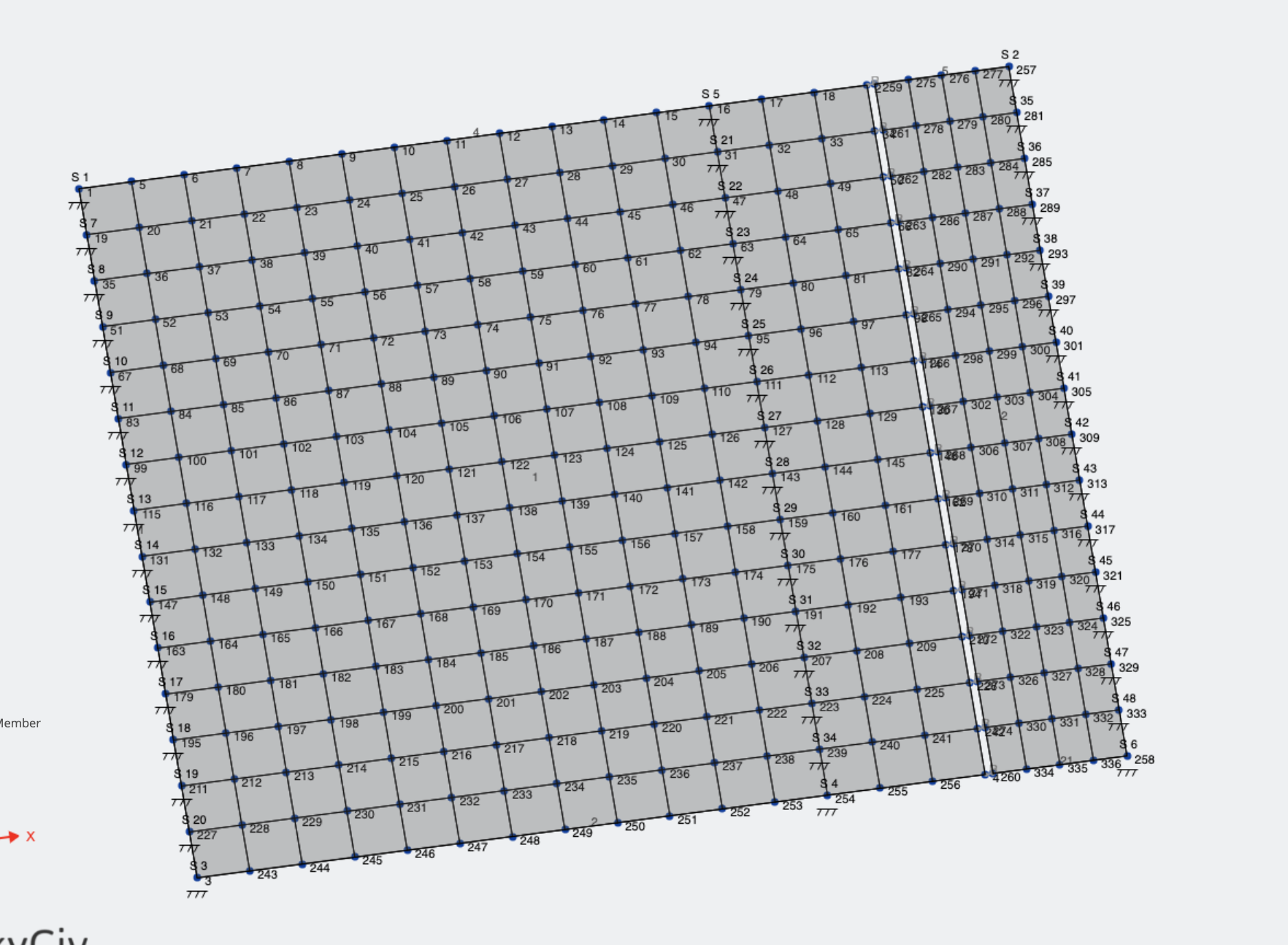Uma introdução e exemplos de casos de uso de membros rígidos
Membros rígidos são uma classe de membros poderosa e eficaz, que pode ser usado para simular um membro totalmente rígido. Eles são frequentemente usados para transferir forças de um local para outro, através de algum arbitrário, imaginário, membro infinitamente rígido. Veja o vídeo abaixo para obter mais informações sobre como eles funcionam, como modelá-los em software, e alguns casos de uso:
Como usar membros rígidos
Para definir um membro como rígido, basta especificar o membro “Modelo” como “Link rígido”. Observação: você pode ter que alternar o modo avançado para ver o na guia de entrada à esquerda atributo:
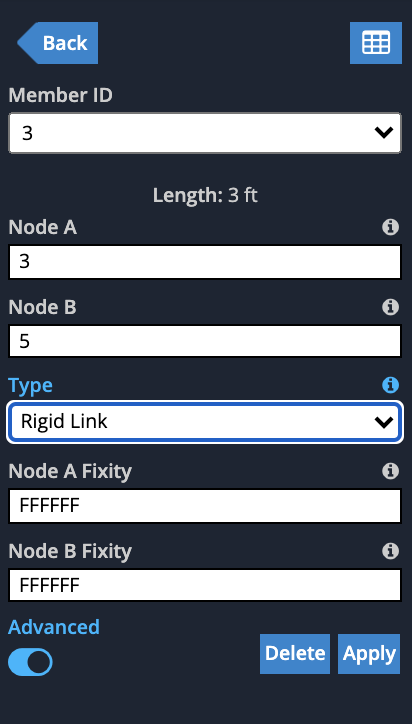
Você notará o colapso das opções (uma vez que não são necessários para links rígidos) mas você ainda pode controlar as fixações finais, que essencialmente controla quais cargas são transferidas. Depois de clicar Aplicar, você verá que o link rígido é desenhado na cor cinza claro com um “R” símbolo ao lado:
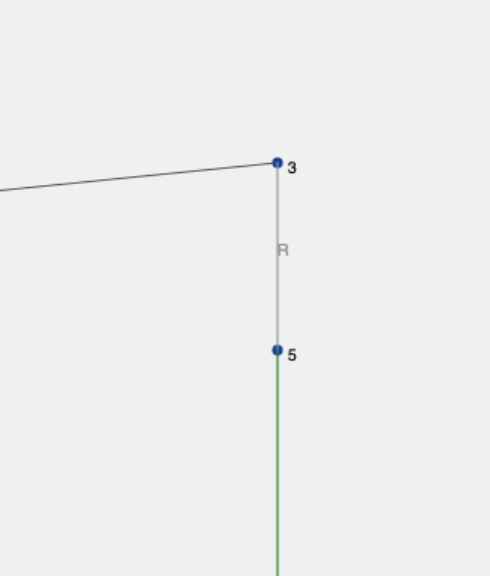
Casos de uso
Vigas empilhadas
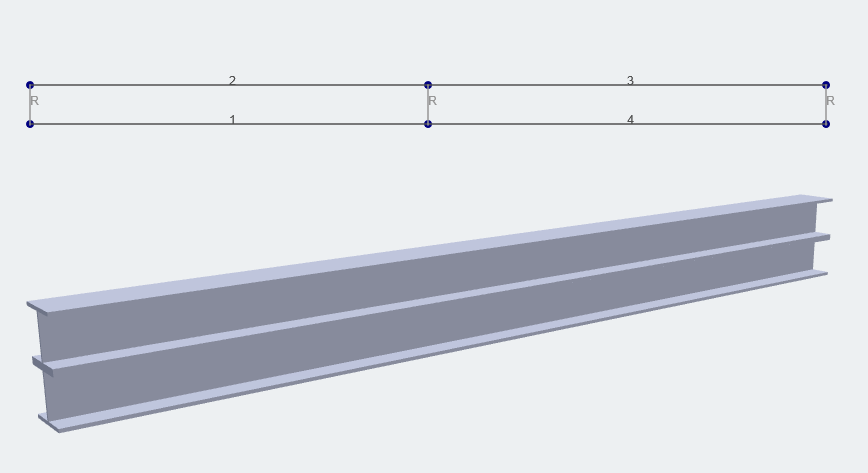
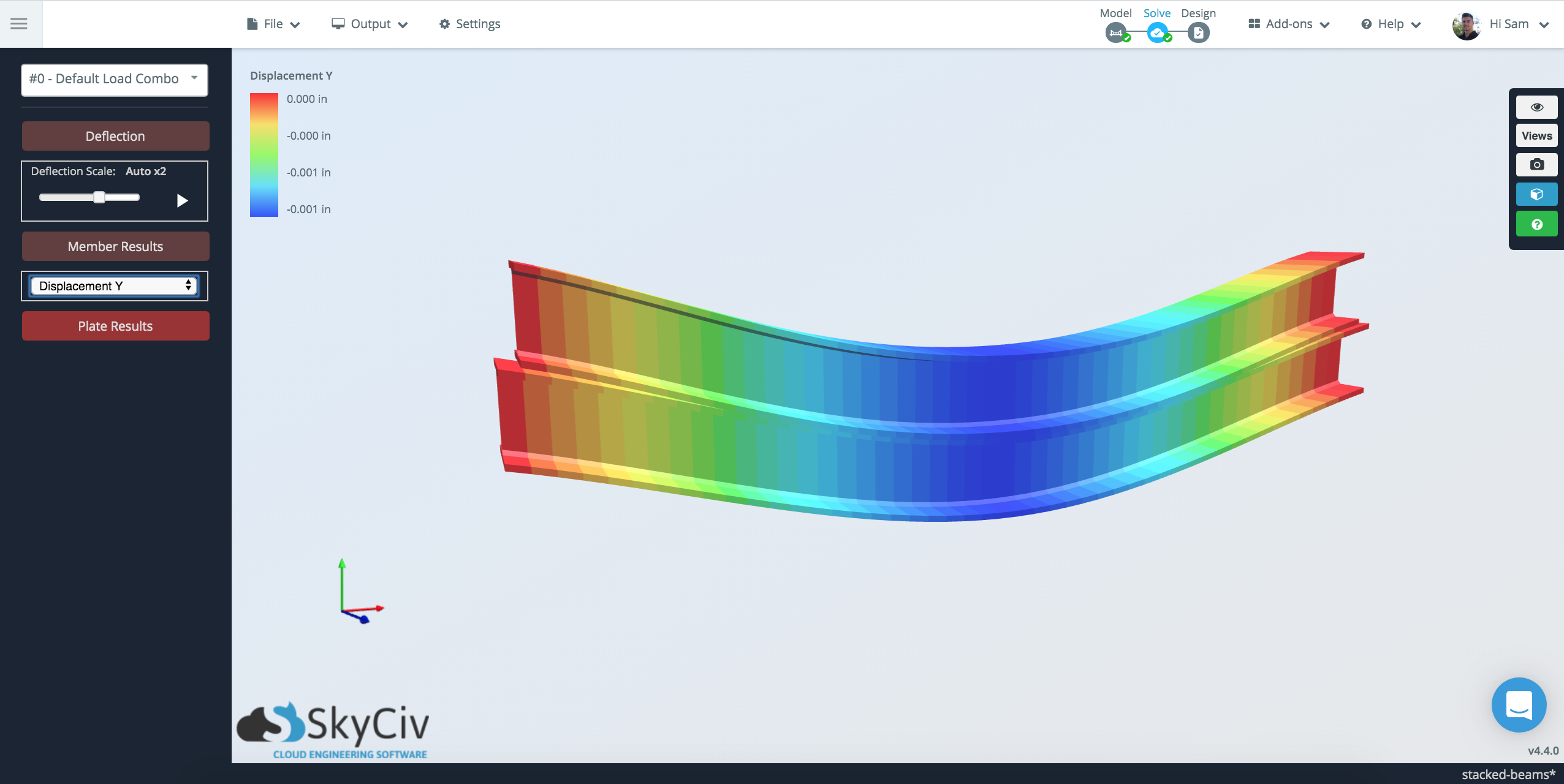
Dobradiças de linha entre placas
Links Rígidos podem ser úteis para definir conexões rígidas entre estruturas ou elementos. Eles são frequentemente considerados como links rígidos imaginários que unem membros para que eles possam traduzir e / ou girar juntos. Um link rígido também pode ser usado para controlar manualmente deslocamentos ou conexões de membros. Além disso, você pode alterar a fixação/liberação no link rígido para controlar quais forças e efeitos ele tem sobre o que está conectado.. Um bom exemplo disso é simular Dobradiças de Linha para conectar placas por dobradiças:
Comece adicionando dois pratos (que você deseja unir por uma dobradiça) e conectá-los com membros rígidos com fixações finais FFFFRR. Esses elos rígidos estão conectando a lacuna nas placas que vemos abaixo:
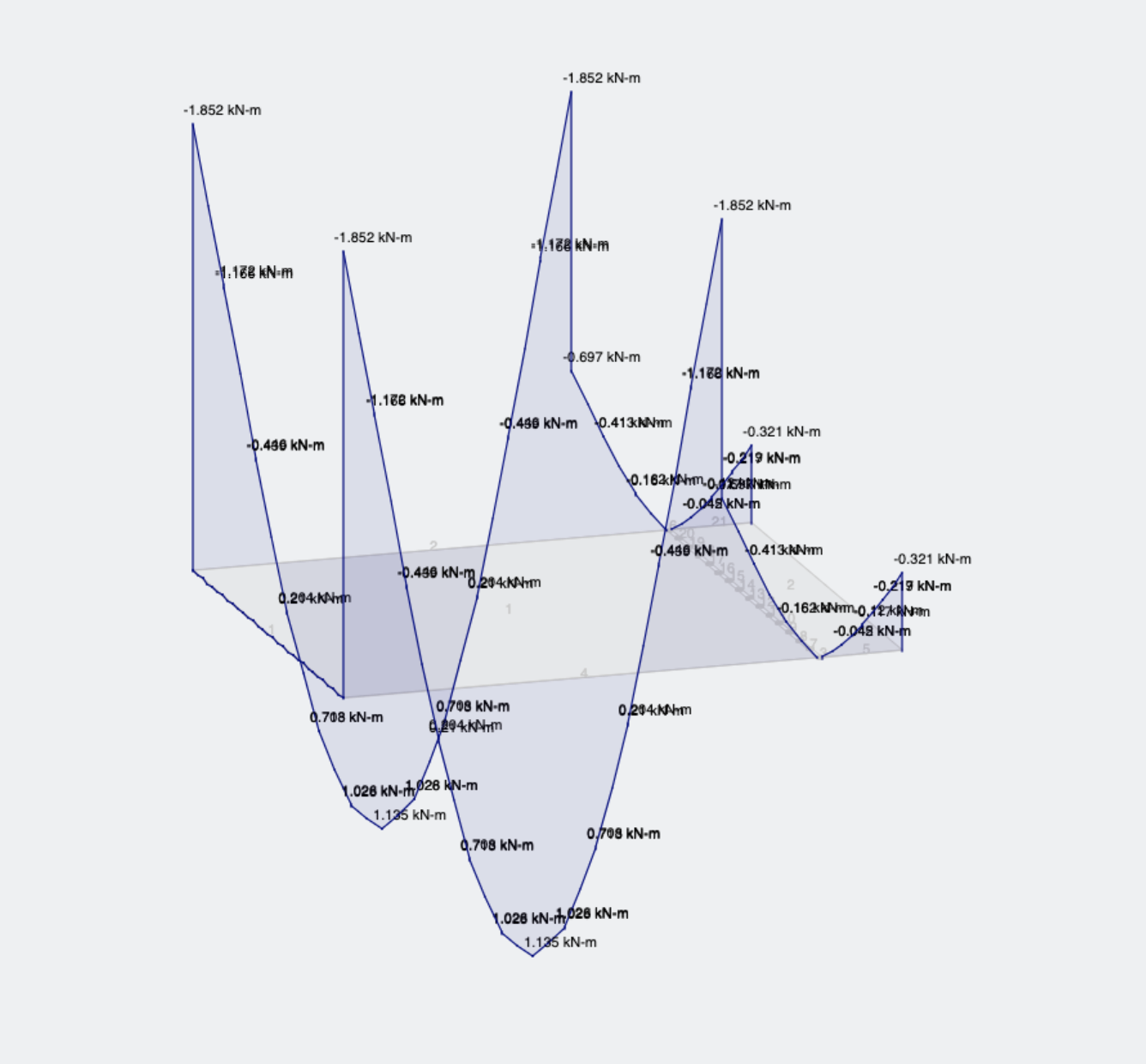
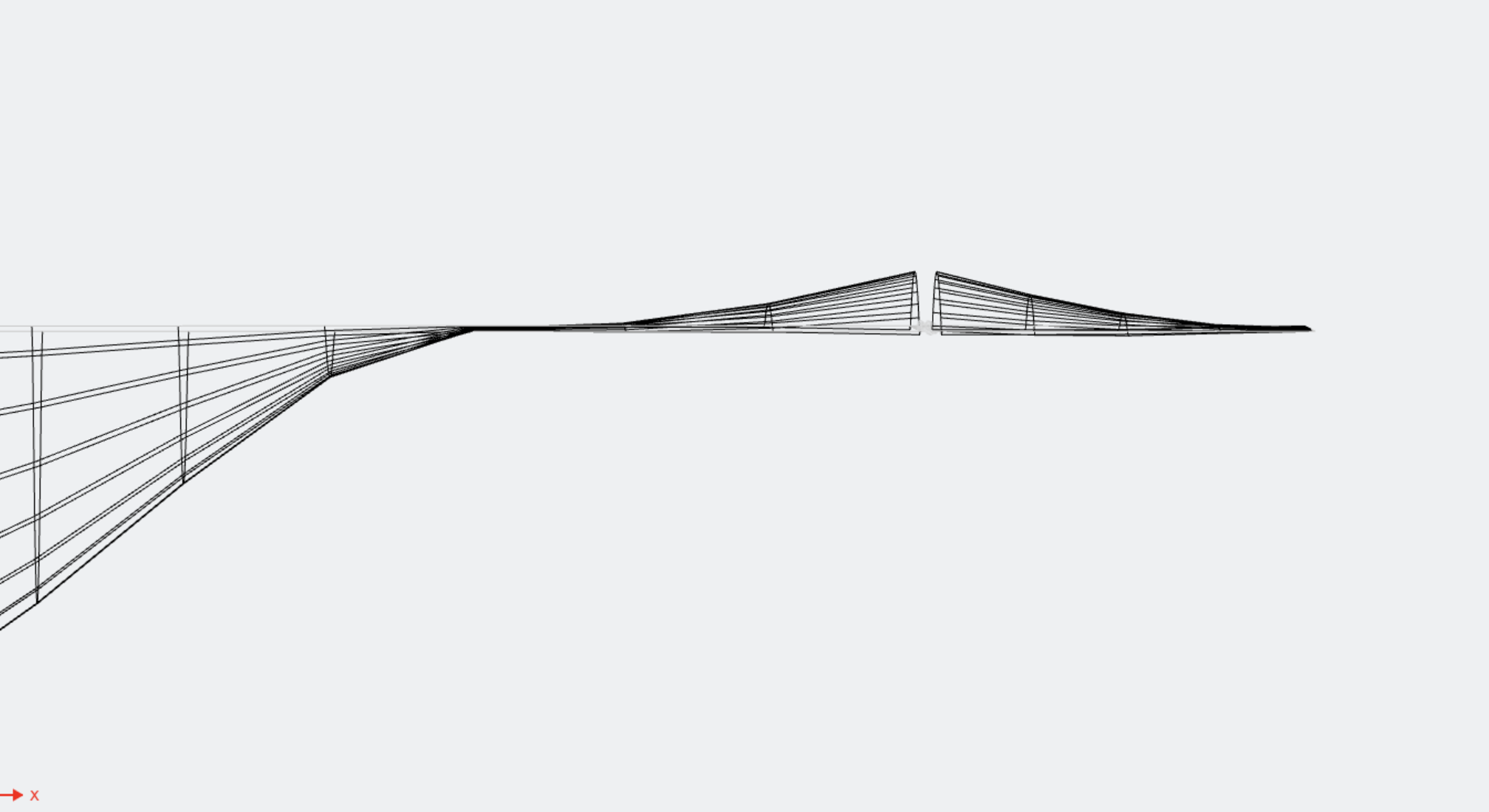
Solução de problemas comuns
Conectividade Mestre/Escravo
Um dos erros mais comuns do solucionador ao usar links rígidos é:
“Erro de código 182: Nó #5 é o nó mestre (Nó A) of Member #17 rigid link and cannot be used as the slave node (Nó B) de outro membro de ligação rígida. This might be due to an offset that is connected to a rigid link. Please remove the offset or rigid link to avoid this issue.”
If you’re receiving an error like this this guide will help you to fix these sorts of issues. The issue occurs because a Master node can have many slave nodes. Contudo, a slave node can only have one master node. Simplificando, keep a single Master with many slaves coming from it. Consider the below example, which was causing the above error:
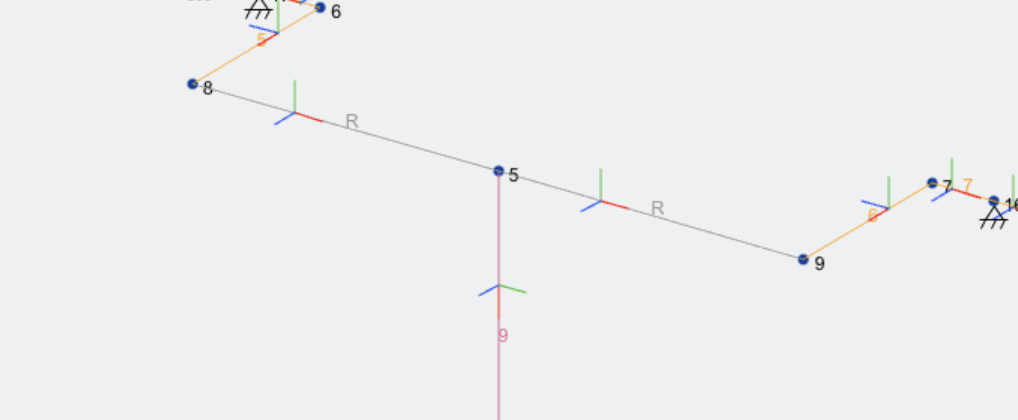
The best thing you can do is turn on the local axis and it will show the direction of master to slave by the red line (the member’s local x-axis). You can see that the red line is flowing left to right which would indicate that the Slave of one member is also a Master of another.
Para consertar isso, flip the node IDs of the first member so you get this behaviour, with the rigid members sort of flowing out from a single node:
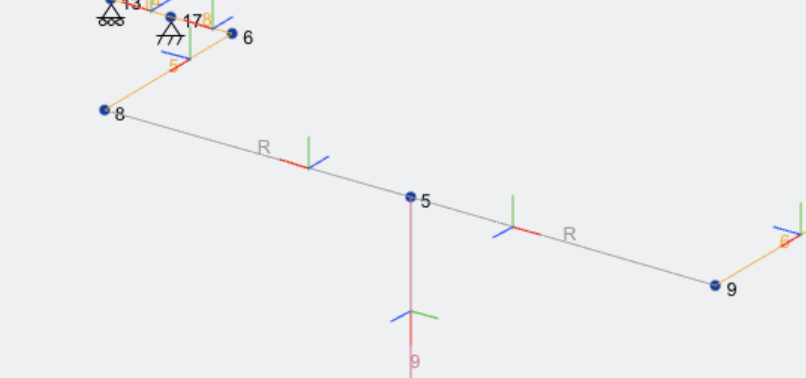
Using Rigid Links near Offsets
This is quite similar to the above issue, no entanto, eles podem ocorrer automaticamente ao usar compensações. Com compensações, o nó mestre é sempre o nó do qual o membro é deslocado. O principal é o mesmo acima, então para garantir que isso funcione, sempre tenha a barra rígida começando no nó de deslocamento. De novo, the member local axis should fluir:
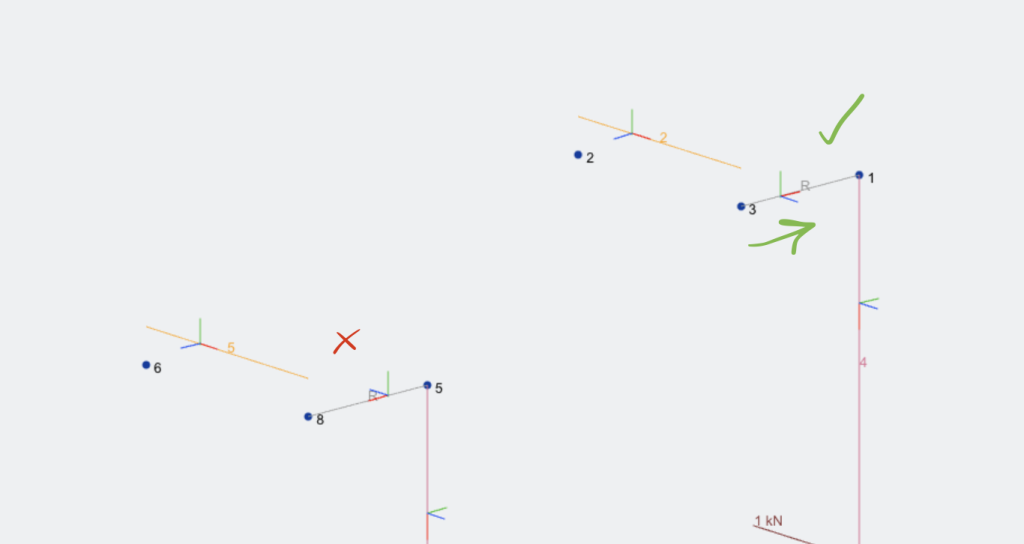
Diafragmas Adjacentes
Having two connected diaphragms can also cause Master-Slave issues. It’s important to note that the Master node in a diaphragms is always the first node. This can create issues where two connected diaphragms have a common master/slave node. So if you want two adjacent rigid diaphragms, you would need to set it up like so:
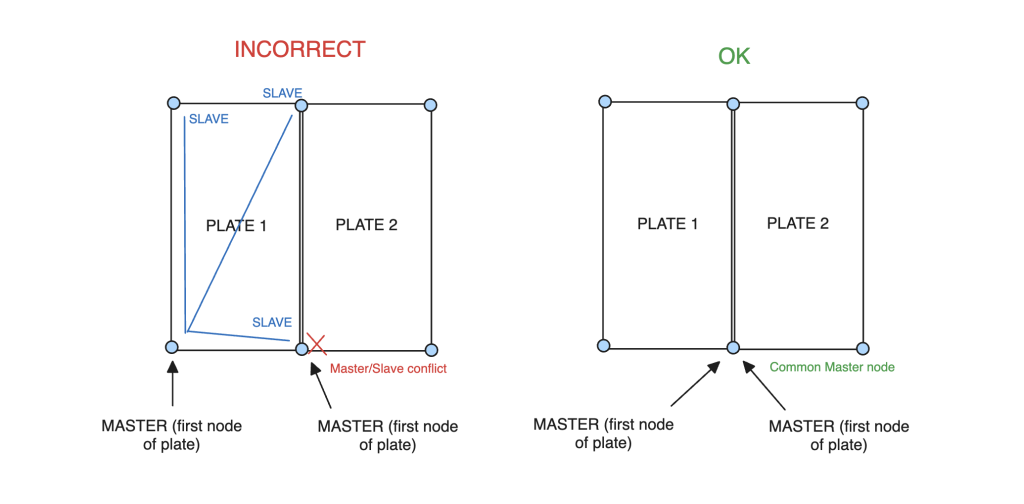
The problem can be worsened if there are more than two diaphragms, since there is no way to share a common master node. Nesse caso, it is better to replace the whole plate with a single rigid diaphragm, remember you can have more than 4 nodes for a plate, so this should be a pretty acceptable workaround in most cases:
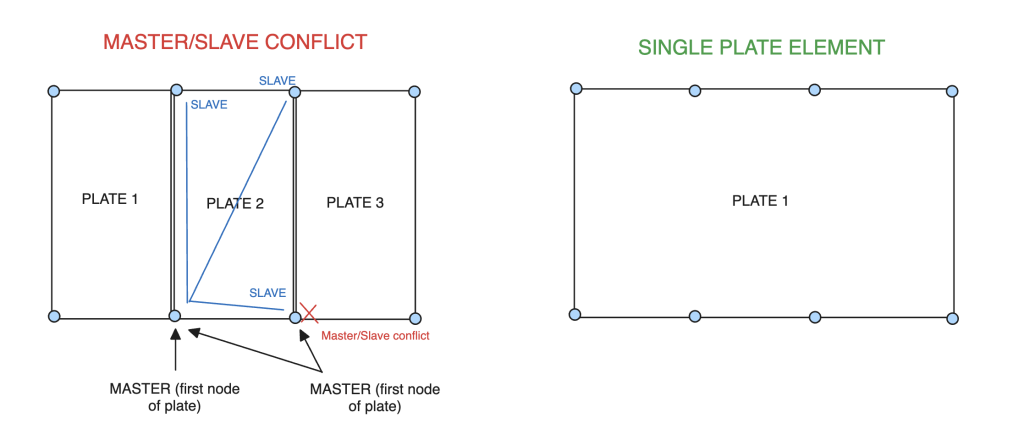
Slaves Cannot be Supports
This is a general structural analysis limitation.

